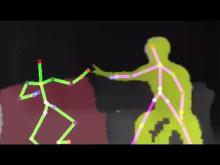Gym Session Recording Tool
For any gym goer it is often important to record the specifics of what exercises were done in each session, be that minutes on a bike or similar cardio machine, reps on any of the various weight training machines or cardio circuits on the studio floor.
There are already a number of applications in existence for doing similar (see here), so can these be researched, reviewed and improved upon, or a whole new (better) way of doing this devised.
This project would expect students to do the research, find out what gym goers want and then design-build-test an application (mobile or web) to solve the problem identified.

